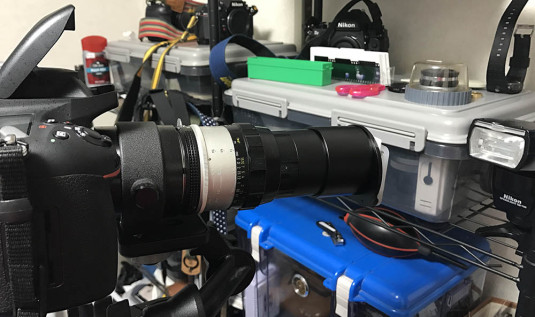Nikon D850 negative digitizer mode by Richard Haw
Hello, everybody! Here in this blog post, I will show you how to access the Nikon D850’s unique “Negative Digitizer Mode”. Now, I would apologize for the lack of sound on my video because for some reason my iPhone picked up nothing. So I was talking loudly making sure that you will hear what I was saying but once I got to see the video I was disappointed to find that no sound was recorded! This is probably good news for people who dislike my bastardized “Commonwealth English” accent. Again, my sincerest apology! I will make up for this!
I have been digitizing my negatives using DSLRs for some time now. I have been using the Nikon Picture Control so I will get a positive image when I preview my capture on the camera’s LCD. While this works well with monochrome pictures, I wasn’t very happy with this workflow when it comes to C41 process films due to the heavy amber tint and this requires more time and effort to fix in post but I have gotten used to it somehow (unfortunately) by now and Nikon rocked the boat so to speak when they implemented the new Negative Digitizer Mode.
Update – here is the new video:
Here is the brief video showing how the new “Negative Digitizer Mode” works. I wasn’t planning on making this video so I didn’t have any negatives at hand but I trust that you will quickly pickup what’s going on anyway.
You will have to enter into the Live View picture taking mode and then click the i button to bring out the menu on the right sidebar. Scroll down a bit until you see the icon for the Negative Digitizer Mode. Select which one you want between monochrome and C41 process film and begin capturing! It’s very easy!
As you can see from the picture at the beginning of the post, you will need a lens that is macro-capable and something to secure your negatives. I’m using an old Nikon ES-1 for this but Nikon is coming out with the Nikon ES-2 for strip film. It should be much better because it has a holder for strip film but the price is not cheap at $190.00 ($140 in the US)! Will I buy one? Hell, no!
Before I forget, you will also need to illuminate your negatives so you will need a flash gun. Some people just use bright LED lights or sunlight but I prefer to use my Nikon SB-700 instead. To be honest, anything should be OK so long as you’re illuminating your negatives properly.
Having the Negative Digitizer Mode means that I will spend less time working on the curves and white balance of my capture so that it will look as close to what’s it suppose to be. If you look at the video, you can see that the velvet mat on the table is red and as I point the camera towards it that turns blue because blue is on the opposite end of the colour wheel. The colour also gets inverted when you are in monochrome mode but as the name implies, it is best suited only for your monochrome negatives.
This all looks handy and nice until you realize that you will NOT get the results as a RAW file! I am not sure why because this can be easily be implemented so I am now thinking that this is just an extension of Nikon’s in-camera RAW editing features where post-processes like “Photoshop filters” are implemented and isn’t something that cannot be embedded within the RAW file. This is sad because the whole point for me using a DSLR to digitize my negatives is having the powerful RAW manipulation tools at my disposal like exposure, etc! This should make the purists and the “direct from scanner” crowd happy.
Will I recommend this as a way to digitize your negatives? Yes, of course! It can be very fast compared to a scanner-based workflow and the Nikon D850’s 44MP sensor will be more than enough. To be honest, I can really forget about having the RAW files if the captures look great. I haven’t seen anything yet outside of what is shown on the brochures so I cannot make any conclusions just yet. If I’m going to base it on marketing literature then the results look good enough. If it’s that good that you don’t need to play around with it at post then I am all for it.
Thank you guys again for supporting my blog. See you guys again next time, Ric.
This post was originally published here. Check also Richard’s Facebook page. All pictures are used with permission. If you have an interesting idea for a guest post, you can contact me here.








